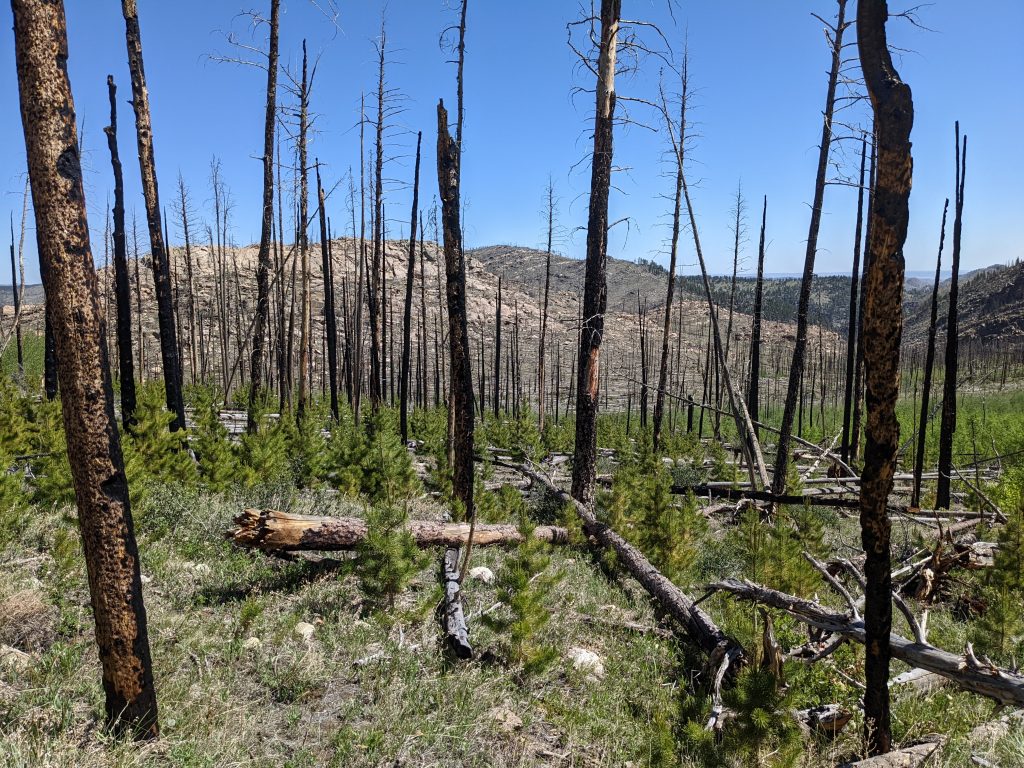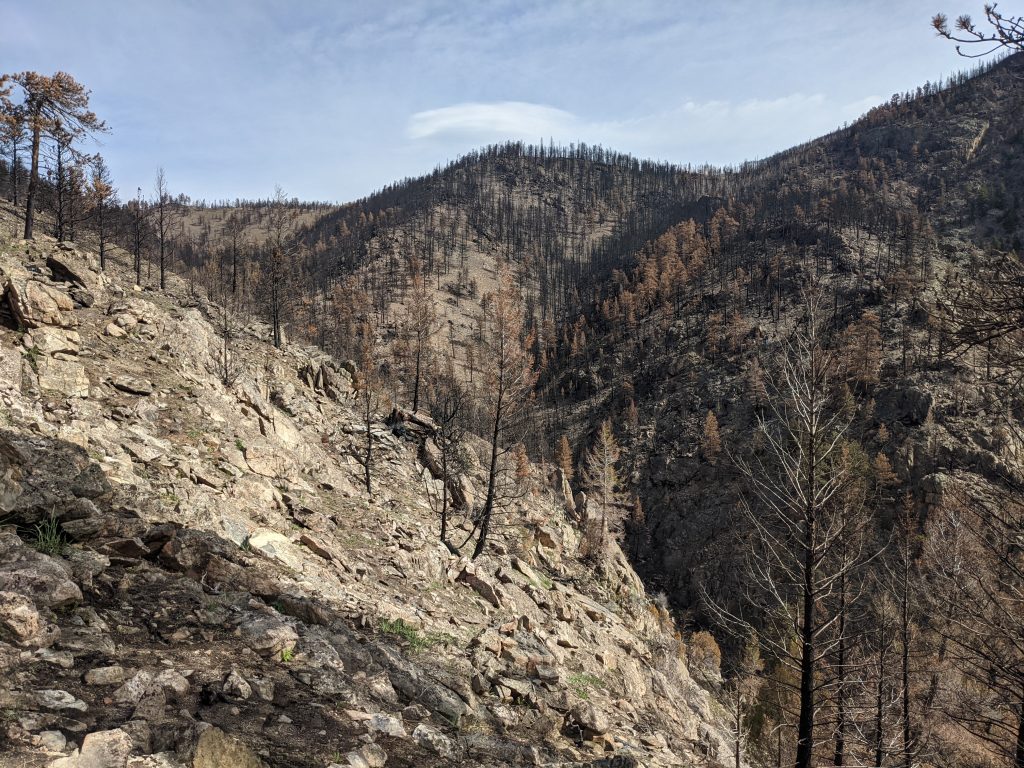
Colorado State Forest Service names Tony Vorster 2023 Partner of the Year

Tony Vorster, a research scientist in Warner College’s Natural Resource Ecology Laboratory (NREL), has been named 2023 “Partner of the Year” by the Colorado State Forest Service (CSFS). Each year, this award is given to one CSFS collaborator in recognition of their outstanding work with or in support of the agency.
In her nomination of Vorster as Partner of the Year, Amanda West Fordham, Associate Director of the CSFS Science and Data Division, sums up her experience working with Vorster, stating: “He has a passion for applied natural resource science, is approachable, inquisitive, and strives to increase connections and collaborations to answer challenging questions… He is the kind of partner that CSFS can reach out to anytime.”
Both the NREL and CSFS are part of Warner College of Natural Resources (WCNR) and strive to advance ecosystem science and steward Colorado’s lands for the benefit of current and future generations. With their complementary missions, ties between the two organizations have existed for years and research collaborations have been natural.
Research collaborations between the CSFS and NREL
Vorster’s first collaborative research grant was funded in 2023 by the USDA National Institute of Food and Agriculture. It advanced data archiving, collection, and distribution platforms at the CSFS and incorporated CSFS and other data into research aimed at informing climate adaptive forest management.
The project team digitized historical CSFS records, such as forest treatment data, and developed new applications for CSFS foresters to track their projects in the Colorado Forest Atlas, which provides interactive mapping applications for Colorado’s forests. Tools were thus developed allowing the CSFS to streamline the tracking of their forest management. Data from the CSFS was then used in research, such as evaluating the effectiveness of pre-fire forest treatments at reducing wildfire burn severity.
The NREL has also collaborated with the CSFS through NASA DEVELOP, a NASA program hosted by Vorster and his team that provides internships and research opportunities for students who want to learn more about remote sensing and geospatial sciences. During ten-week projects, participants work closely with DEVELOP science advisors and mentors to address real-world problems. The NREL, CSFS, and Colorado Forest Restoration Institute (CFRI) have collaborated on several DEVELOP projects, working with the interns to address forest science needs, such as mapping wildfire impacts and forest structure.

Finally and most recently, Vorster is leading the development of a statewide forest carbon inventory. Recent legislation mandated that the CSFS establish a carbon accounting framework to allow for accurate measurements of forest carbon stocks and changes in these stocks over the last few decades. Vorster and the CSFS worked closely with partners at CalFire, the USDA Forest Service Pacific Northwest Research Station, the USDA Forest Service Rocky Mountain Research Station, and others to adapt the framework developed for the Pacific Northwest to meet Colorado’s needs. This comprehensive forest carbon inventory for the state will be released in the coming months, and the framework will be used to update the inventory every several years.
“As state lawmakers are trying to build policies around cutting emissions and enact specific reduction goals, they’re looking towards these natural and working lands to be part of nature-based solutions. It’s crucial to have that information about what our forests are doing,” explains Vorster.
Navigating challenges and opportunities
Throughout these processes, Vorster and his collaborators have had to adapt to challenges and evolving project needs. For example, when working on the carbon accounting framework, some of the equations used to calculate tree carbon had been going through national updates, so rapidly adopting them gave them the unique opportunity to be at the cutting edge of the industry. Vorster emphasizes the importance of adaptability when projects have to be modified, elaborating that “when that happens, you have to try and try until you feel like you’ve given it a good shot, and then pivot. That’s just the nature of science.”
Despite their challenges, each project also presented opportunities for collaboration with other scientists and organizations throughout the country. The USDA project, for example, has created opportunities for numerous interns, graduate students, and early career professionals and catalyzed new research projects on topics such as the impacts of post-fire restoration treatments on vegetation and watershed recovery.
Impacts on community engagement and sustainable forest management
Beyond collaboration with other researchers, these projects led to engagement with local communities, particularly those with a strong reliance on forestry. The CSFS consists of both researchers and collaborators located throughout the state who work with local ranchers and host workshops that discuss the implications of their work and its implementation. These community engagement sessions help to guide research priorities based on community interests and needs and provide an ideal opportunity to take in feedback from the public.
Vorster’s research has been extremely beneficial to statewide forest management, especially as the climate crisis has progressed. The CSFS has experienced a big push to provide climate-adaptive forest management practices to help with worsening issues such as wildfires. In fact, when faced with the wildfires experienced across Colorado in 2020, i.e., the Cameron Peak fire, they took the opportunity to learn about the effectiveness of current fire treatments and understand how to adapt them based on community needs.
While these projects have been completed, the impacts of this work extend beyond Vorster and his team. From spawning new research projects at the CSFS and NREL to advancing forest science and creating career building opportunities for interns, it is undeniable that Vorster’s impact has been strong at both departments during the past year. Looking forward, the NREL and CSFS will continue to have meaningful collaborations with the intent to further ecosystem research and mitigate environmental damage. “Our group has something to contribute to these conversations, and we need to engage in these tough topics and lean into the strength of being based out of the university to do that research that answers these questions,” explains Vorster.